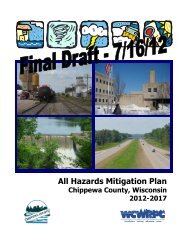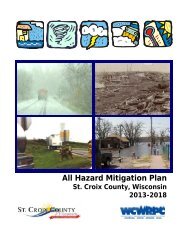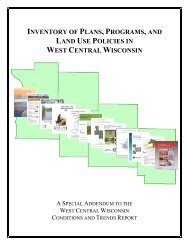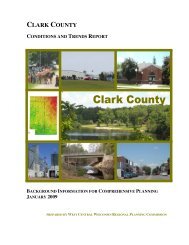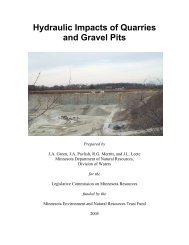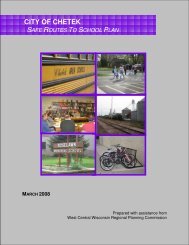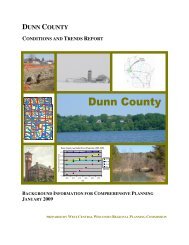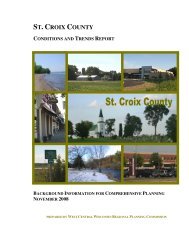The Economic Impacts of Alaska's Mining Industry - Alaska Miners ...
The Economic Impacts of Alaska's Mining Industry - Alaska Miners ...
The Economic Impacts of Alaska's Mining Industry - Alaska Miners ...
Create successful ePaper yourself
Turn your PDF publications into a flip-book with our unique Google optimized e-Paper software.
CHAPTER IV: OTHER ECONOMIC<br />
BENEFITS OF THE MINING INDUSTRY<br />
<strong>The</strong> mining industry has a broad range <strong>of</strong><br />
economic impacts in addition to jobs and income.<br />
<strong>The</strong> industry generates revenue for state and local<br />
governments. It generates revenue for other<br />
public and private landowners and business<br />
interests in the state. It <strong>of</strong>fers training and skill<br />
development for <strong>Alaska</strong>ns that can have lifetime<br />
benefits within the industry and in other sectors <strong>of</strong><br />
the economy. <strong>Mining</strong> helps build infrastructure that<br />
can support communities and other industries.<br />
<strong>The</strong>se and other benefits are described below.<br />
<strong>Mining</strong> <strong>Industry</strong> Payments to the<br />
State <strong>of</strong> <strong>Alaska</strong><br />
<strong>The</strong> mining industry generates revenues to the<br />
State <strong>of</strong> <strong>Alaska</strong> through a number <strong>of</strong> mechanisms,<br />
such as license fees, rental, royalties, material<br />
sales, and others. <strong>The</strong> mining industry is also an<br />
important source <strong>of</strong> revenue to quasi-government<br />
organizations such as the <strong>Alaska</strong> Railroad and the<br />
<strong>Alaska</strong> Industrial Development and Export<br />
Authority. <strong>The</strong>se revenues are described below.<br />
<strong>Mining</strong> License Tax — <strong>The</strong> state collected<br />
$10,317,238 in mining license tax in fiscal year<br />
2005. <strong>The</strong> amount collected through this tax is<br />
expected to increase in fiscal year 2006 as world<br />
metal and mineral prices improve. This is a tax on<br />
the net income <strong>of</strong> all mining property in the state<br />
irrespective <strong>of</strong> land ownership status, capping at 7<br />
percent, less exploration and other credits. Except<br />
for sand and gravel operations, new mining<br />
operations are exempt from the mining license tax<br />
for a period <strong>of</strong> 3.5 years after production begins.<br />
Annual Claim Rental — In 2004, the mining<br />
industry paid $2.7 million in annual claim rentals.<br />
<strong>The</strong> Annual Rental law (AS 38.05.211) requires<br />
locators and holders <strong>of</strong> State mining locations to<br />
pay an annual cash rental. <strong>The</strong> requirement<br />
applies to mining claims, leasehold mining leases,<br />
<strong>of</strong>fshore mining leases and prospecting sites on<br />
State land. For all traditional mining claims (40<br />
acres), the annual rental amount is $25 per year<br />
for the first five years, $55 per year for the second<br />
five years, and $130 per year thereafter. For all<br />
section locations (160 acres), the annual rental<br />
amount is $100 per year for the first five years,<br />
$220 per year for the second five years, and $520<br />
per year thereafter. For all leases, the annual rent<br />
is $.66 per acre per year for the first five years,<br />
$1.32 per acre for the second five years, and<br />
$3.30 per acre per year thereafter. For prospecting<br />
sites, there is a one-time upfront requirement <strong>of</strong><br />
$200, which covers the two-year term <strong>of</strong> the site.<br />
Production Royalty — In 2004, the production<br />
royalty payment from minerals was $162,367. <strong>The</strong><br />
majority <strong>of</strong> this payment came from royalty interest<br />
holders at True North (Fort Knox Mine) and the<br />
remainder came from individual placer miners. 31<br />
No other mining production occurred on state land<br />
in 2004. As world mineral prices improve, it is<br />
anticipated that production royalties will increase<br />
in fiscal year 2006.<br />
<strong>The</strong> Production Royalty law (AS 38.05.212)<br />
requires holders <strong>of</strong> state mining locations to pay a<br />
production royalty on all revenues received from<br />
minerals produced on state land. <strong>The</strong> production<br />
royalty is 3 percent <strong>of</strong> net income as determined<br />
under the <strong>Mining</strong> License Tax Law (AS 43.65),<br />
and regulations (15 AAC 65). A production royalty<br />
return must be filed and all required royalty<br />
payments must be made by anyone: 1) owning,<br />
leasing, and operating a mining property; 2)<br />
owning a mining property and receiving lease<br />
fees, royalty payments based on production, or a<br />
combination <strong>of</strong> lease fees and royalty payments<br />
from the property; 3) leasing a mining property<br />
from another person and operating the property;<br />
and 4) possessing a mineral interest, whether an<br />
economic or production interest, in a producing<br />
property, including royalty, receiving lease fees,<br />
working or operating interests, net pr<strong>of</strong>its,<br />
overriding royalties, carried interests in, and<br />
production payments.<br />
Annual Labor — <strong>The</strong> 2004 payment in lieu <strong>of</strong><br />
annual labor from mining and exploration<br />
companies was $226,191.<br />
<strong>The</strong> payment in lieu <strong>of</strong> annual labor is based upon<br />
the premise that when prospecting and the<br />
discovery <strong>of</strong> a locatable mineral, and the staking <strong>of</strong><br />
a mineral location, annual labor must be<br />
performed each year in the further development <strong>of</strong><br />
the locatable minerals so that it can be mined.<br />
Every year, a minimum <strong>of</strong> $100 or $400 worth <strong>of</strong><br />
labor or improvements must be performed on or<br />
for the benefit or development <strong>of</strong> each mining<br />
claim leasehold location on State land. Further,<br />
$100 worth <strong>of</strong> labor or improvements must be<br />
performed on each partial or whole 40 acres <strong>of</strong><br />
each mining lease. <strong>The</strong> holder <strong>of</strong> a mining claim,<br />
leasehold location, or mining lease may make a<br />
cash payment to the State equal to the value <strong>of</strong><br />
labor required ($100 or $400 per claim). In 2004,<br />
31<br />
While True North is on state land, Fort Knox is on <strong>Alaska</strong><br />
Mental Health Trust land.<br />
<strong>The</strong> <strong>Economic</strong> <strong>Impacts</strong> <strong>of</strong> <strong>Alaska</strong>’s <strong>Mining</strong> <strong>Industry</strong> McDowell Group, Inc. • Page 26



